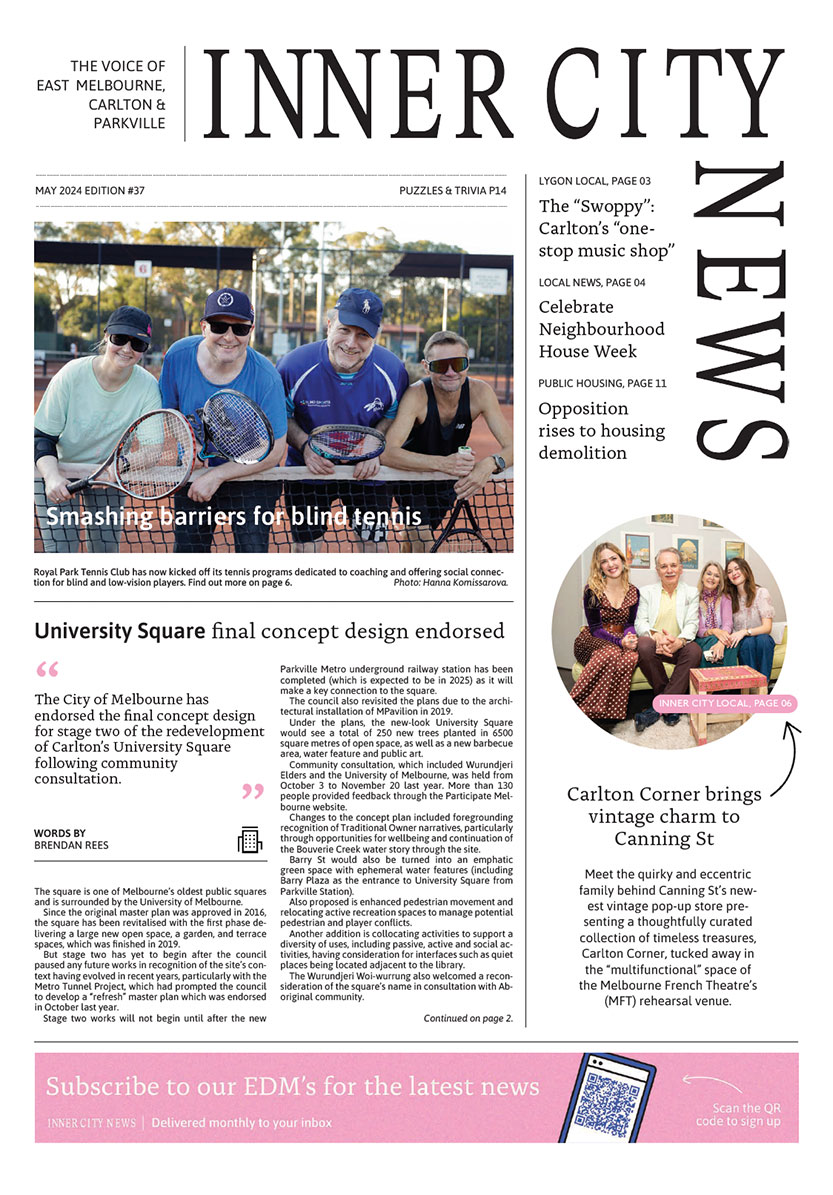Melbourne Uni’s job cuts put “buildings over staff”
After hundreds of job cuts allegedly due to the pandemic, Melbourne University is coming under fire from the education union for investing money in “buildings over staff”.
Four-hundred-and-fifty staff are expected to be made redundant to account for the loss in revenue from international students, with plans to cut dozens more in the coming months.
National Tertiary Education Union (NTEU) Melbourne branch president Annette Herrera said that despite their proclaimed financial hardship, the university has continued to invest in buildings that remain empty.
“We would argue this financial mess is exacerbated by the university that puts buildings over people,” Ms Herrera said.
Rather than spending on more buildings that remain empty the university should invest in its staff who are the soul of this university.
In the past decade, University of Melbourne has spent more than $2 billion on new buildings alone, including the innovation precinct, Melbourne Connect, recently finished in Carlton.
The university is also working on the concept design for the Fishermans Bend campus which is expected to open in 2024, and Parkville’s Student Precinct which will be finished by the end of this year.
In 2019, the former Melbourne University vice chancellor Glyn Davis told The Age that the university was investing in buildings as they will “matter in the future”.
“What you don’t do is load up the institution with expensive permanent staff, because you know that later this will be a significant problem,” Mr Davis said.
Ms Herrera said this attitude was long-standing at the university and staff were “bearing the brunt of the pandemic” as a result.
“Discretionary spending should be limited at this time, the pandemic is not an excuse to treat staff worse as an employer and walk away from the responsibilities to be a good person,” Ms Herrera said.
There definitely is a drop in institutional trust and trust in the university will to do the right thing by staff.
When the pandemic hit in March of last year, revenue losses were originally forecasted to be $177 million with a budget shortfall of $269 million.
Although revenue was down by $211 million and expenses were down by $61 million in 2020, the university still reported a profit of $8 million.
In a letter to staff, vice chancellor Duncan Maskell said “small operating surplus of approximately $8m” was “effectively a ‘break-even’ result”.
Despite this, staff were told to expect more job cuts as the university was still targeting savings of $252m in 2021 on top of the $360 million in savings in 2020.
“The reduction in numbers of international students last year, together with the further reduction we are seeing for 2021, has a long-term impact over subsequent years,” Mr Maskell wrote.
“Reducing our ongoing cost base to live within our means therefore has to remain an important part of the institution’s response.”
In analysing Melbourne University’s annual financial report, NTEU Vice President academic Professor Graham Schaffer said the university had actually made a profit of $168 million.
“As far as I understand it – I am an engineer, not an accountant – this “operating result” [of $8 million] does not comply with accounting standards,” Professor Schaffer said.
“It is an internal financial measure that is calculated by subtracting from the net (or accounting) result discretionary investment income, interest expense, philanthropic endowment income and infrastructure grant income.”
Professor Schaffer said that the way the university has chosen to “allocate spending” suggested management was putting buildings over staff.
“A significant amount of construction is ongoing, new construction has started and new contracts have been awarded. However, there is no information on any of this spending,” Professor Schaffer said.
“Prior to the pandemic, the 2020 Capital Plan envisaged spending of $3 billion over 10 years, of which $1.5 billion was on property.”
“Other universities have been able to mitigate the effects of the pandemic by active management of the capital plan without resorting to mass redundancies and restructuring of the workforce. However, Melbourne does not appear to have chosen this route.”
Although the exact figures are unclear, casual staff in events and the library were particularly hard hit along with academics and professional staff in the science and agriculture departments.
Ms Herrera said that the as the university is such a large employer in Melbourne, the job cuts are “problematic for the whole community”.
“The restructures mean there’s more insecure work, more outsourcing, jobs are disappearing, which is massive when you consider they employ over 10,000 people,” Ms Herrera said.
“They’re paying people out with these redundancies, so this is not a cash flow problem.”
Mr Shaffer said that with the way management are talking staff could expect more job losses.
“My guess is more job losses, more casualisation and more outsourcing, and with that comes higher workloads and with higher workloads comes poorer outcomes particularly for our students,” Professor Shaffer said.
A University of Melbourne spokesperson said that the university has “deferred $330 million of capital expenditure in 2020”.
“The majority of costs associated with Melbourne Connect was paid by the developer,” the spokesperson said.
“The university’s commitments were made pre pandemic.” •
Caption: NTEU Melbourne branch president Annette Herrera and Professor of Materials and Design Graham Schaffer.

Carlton Corner brings vintage charm to Canning St






 Download the Latest Edition
Download the Latest Edition